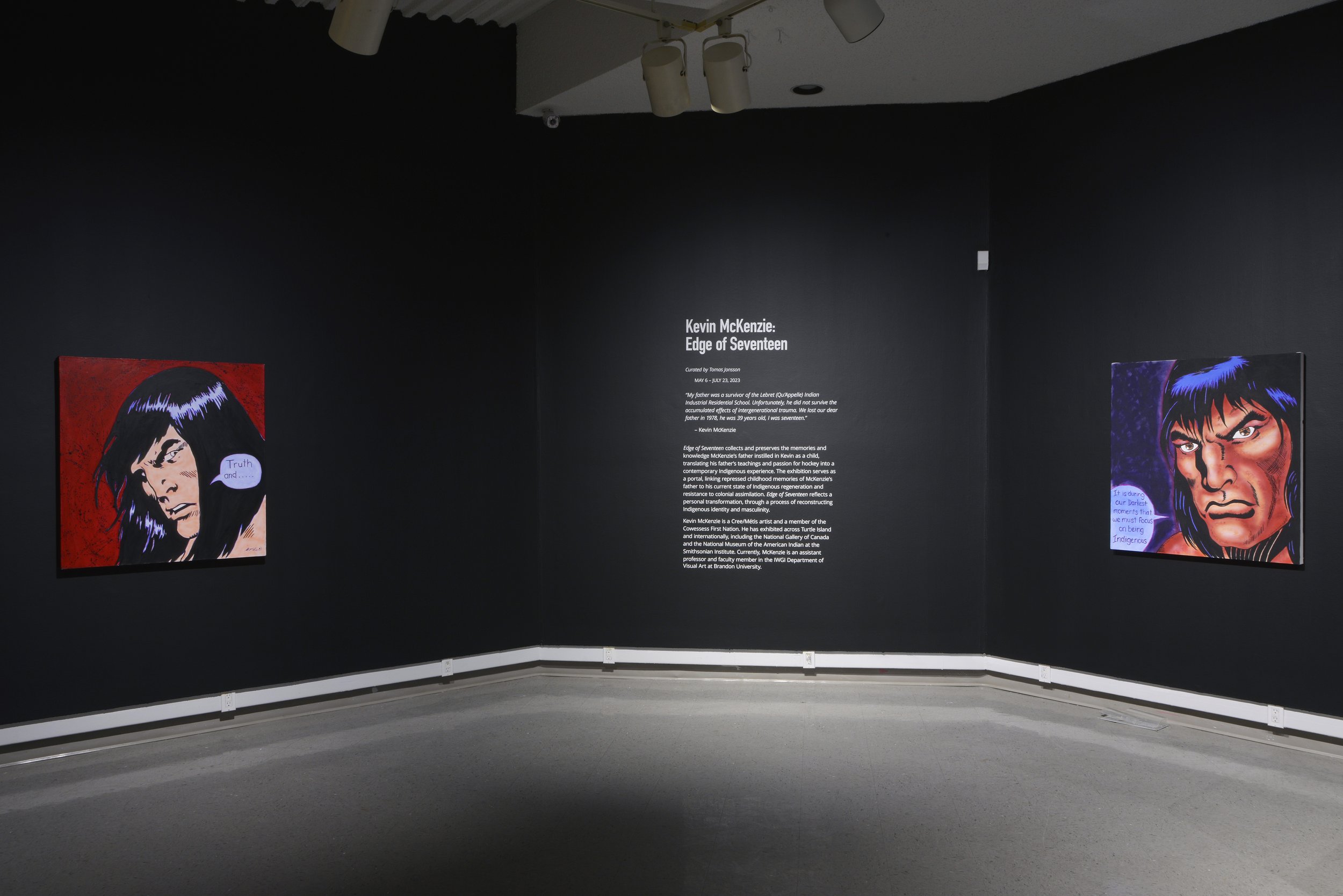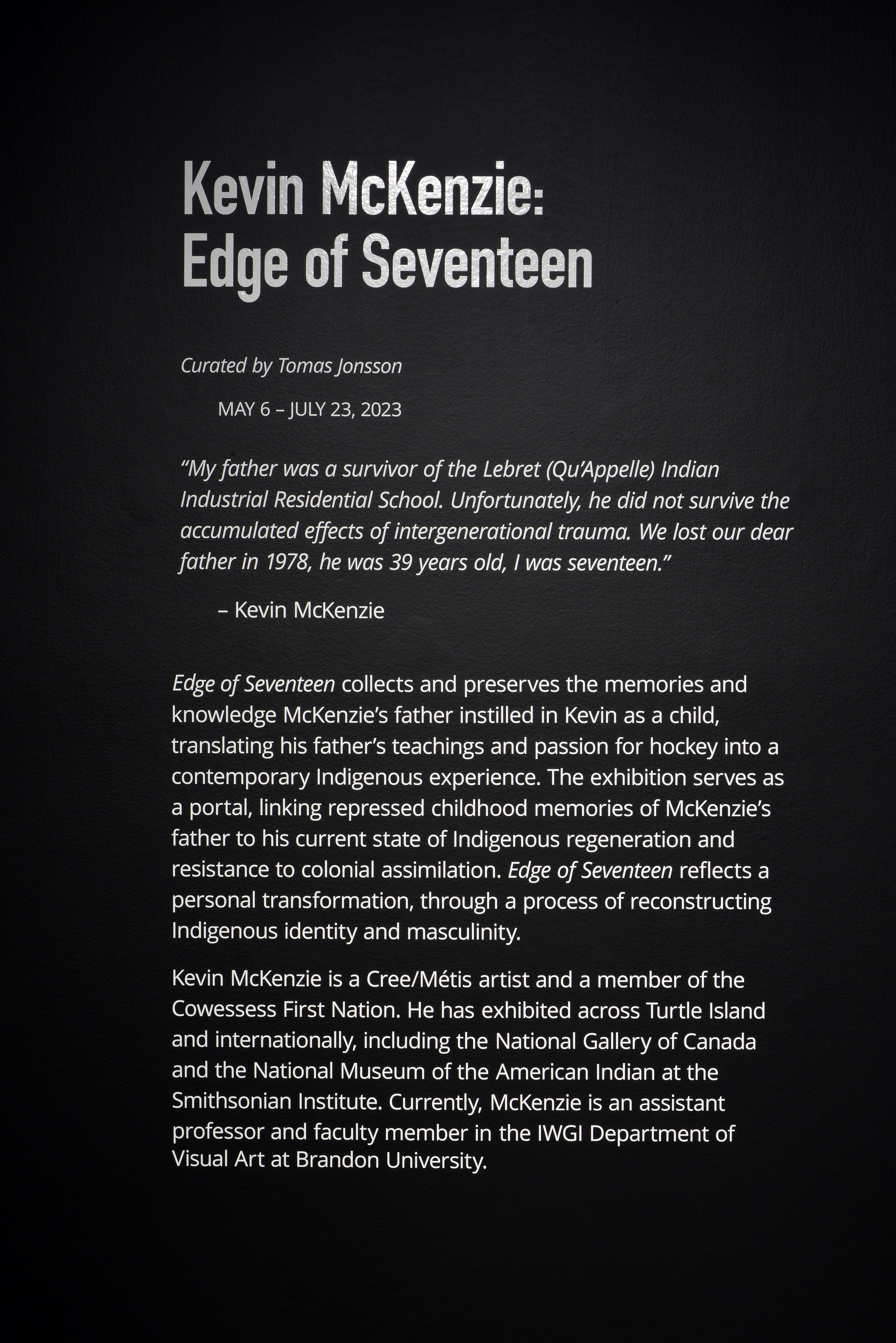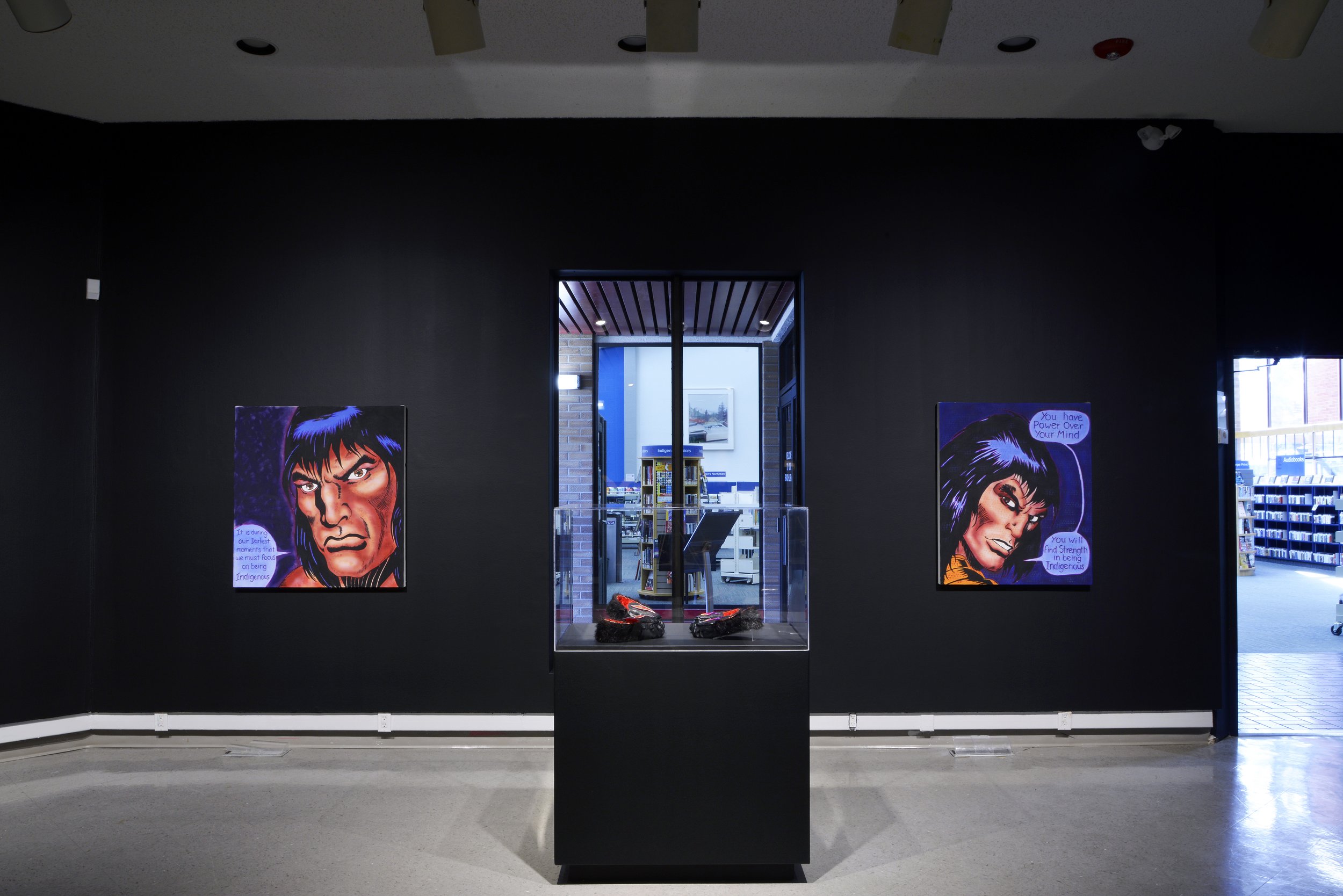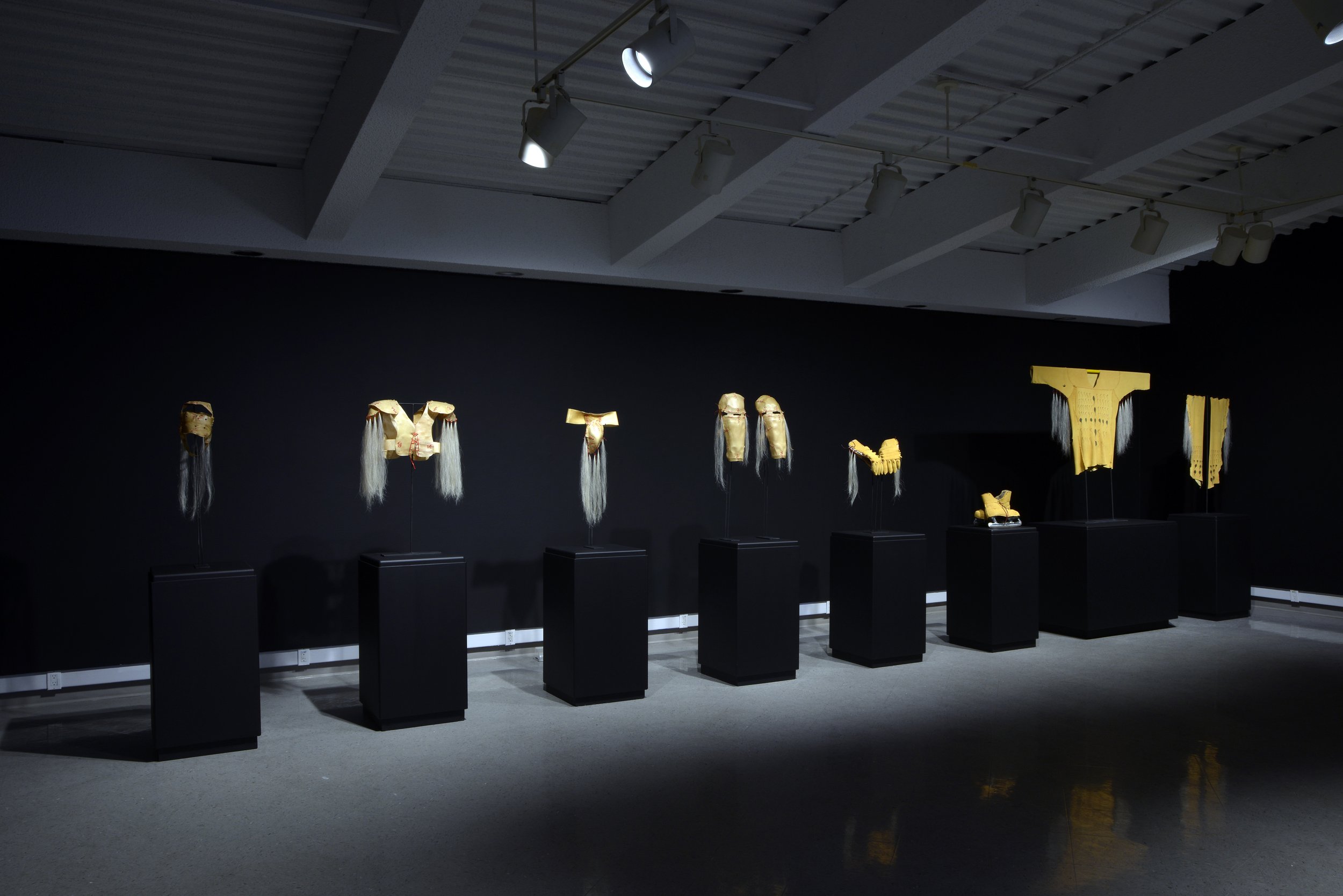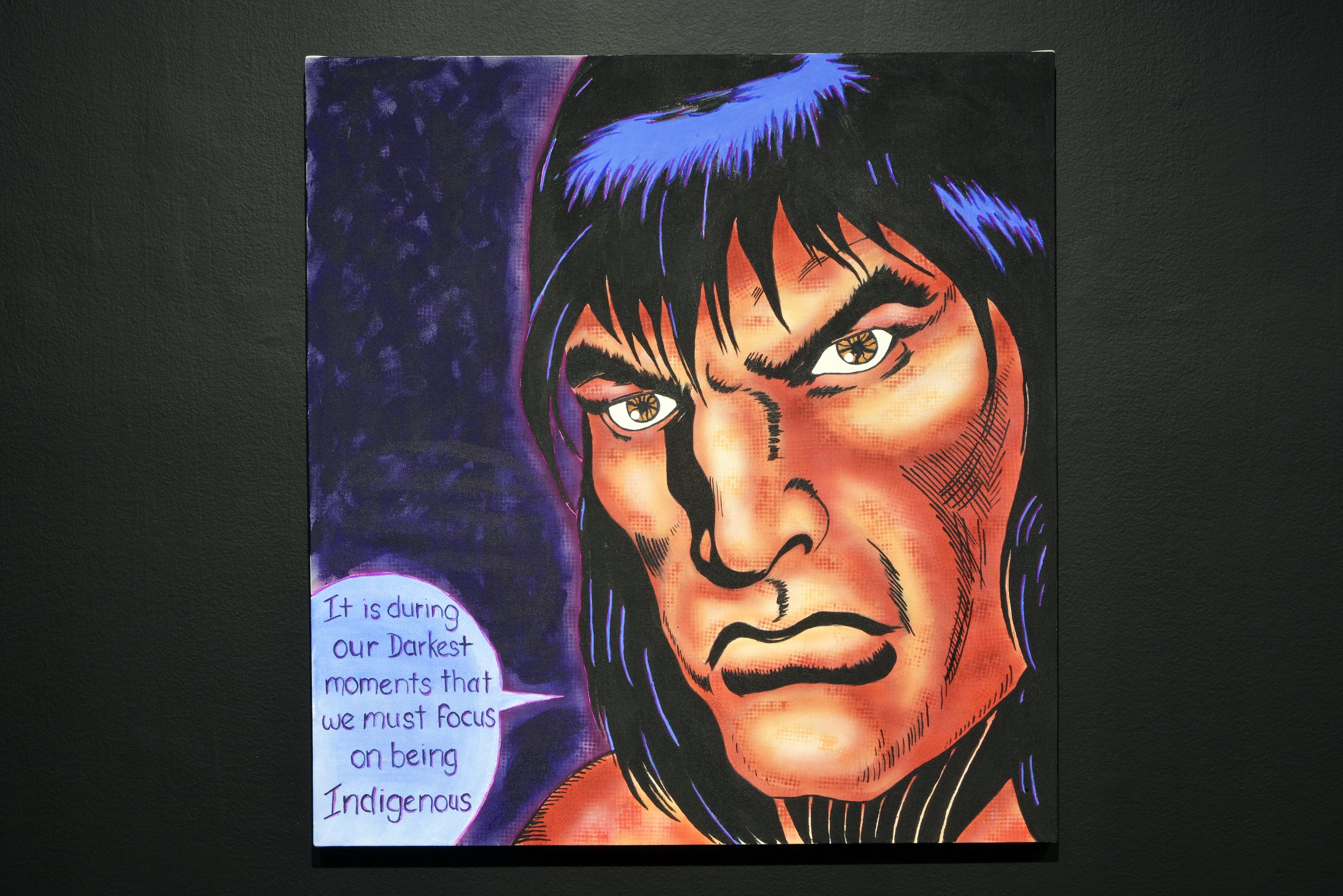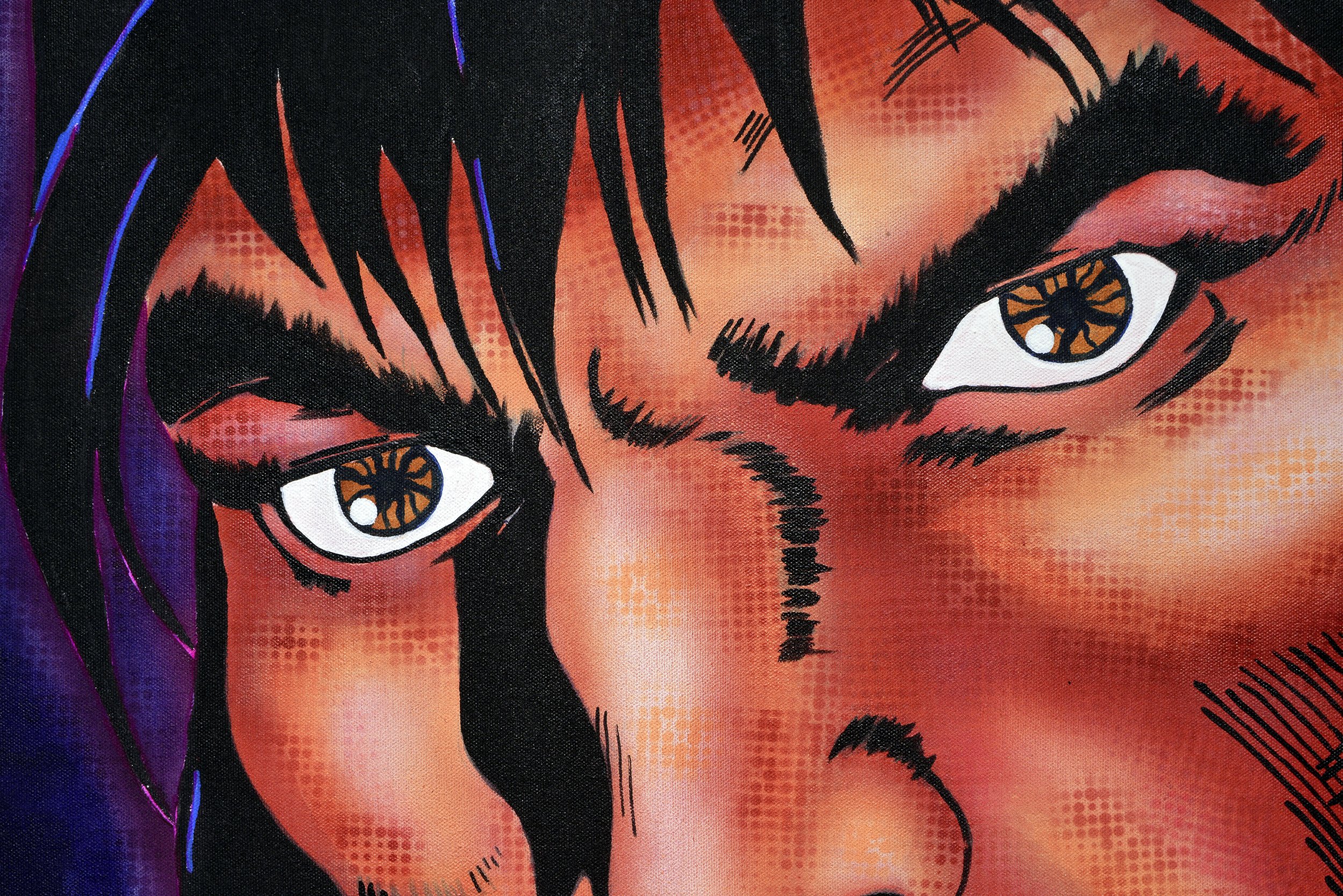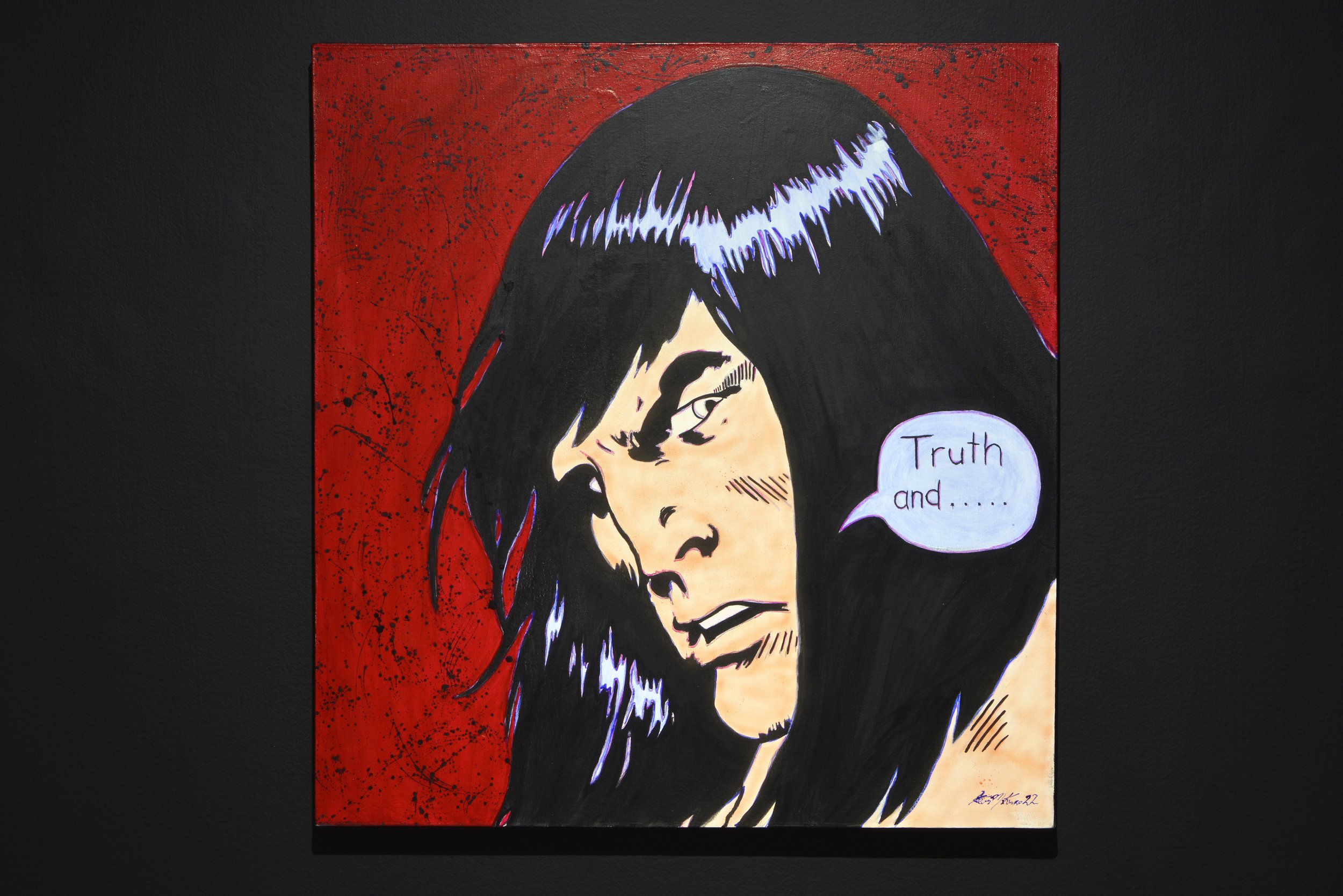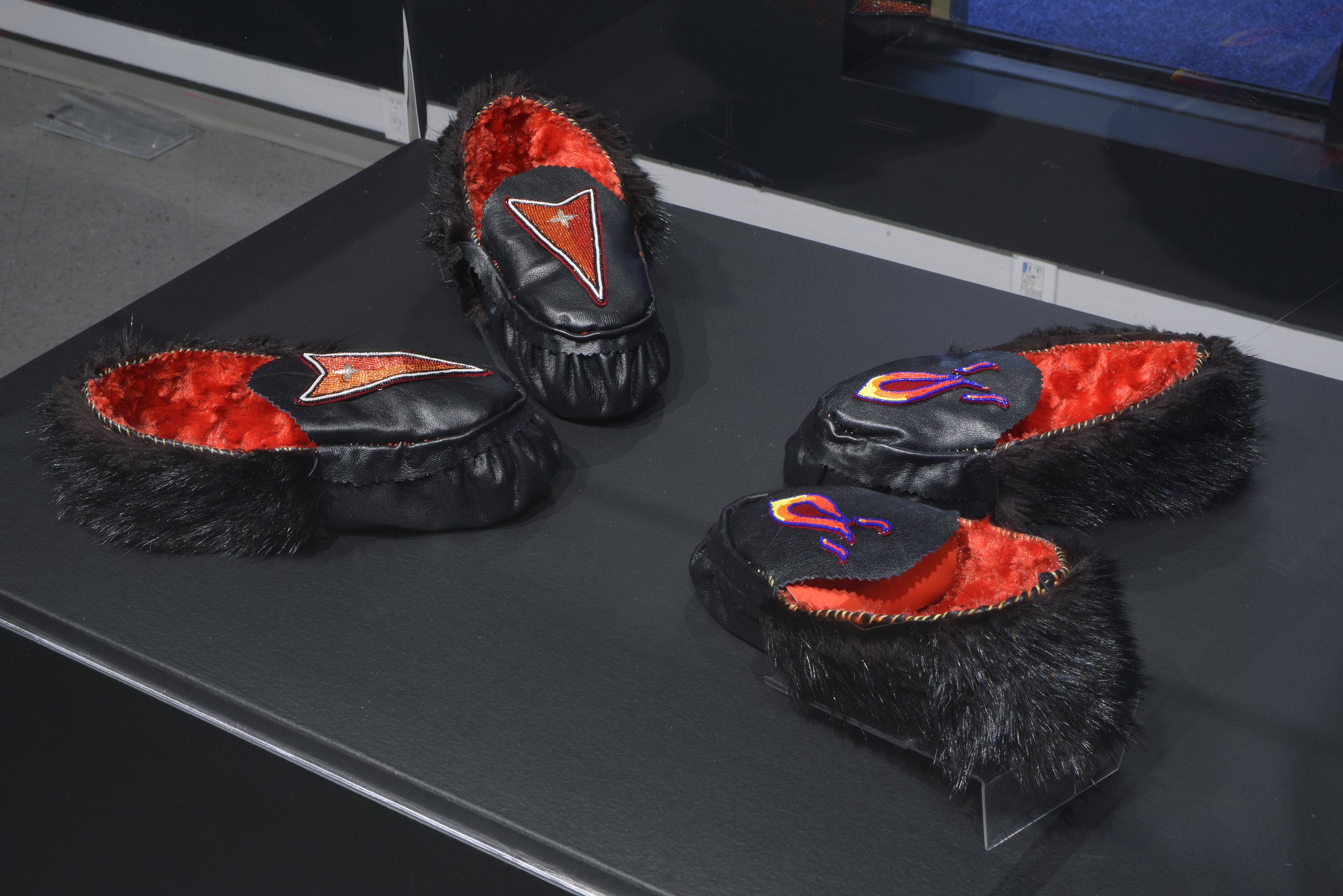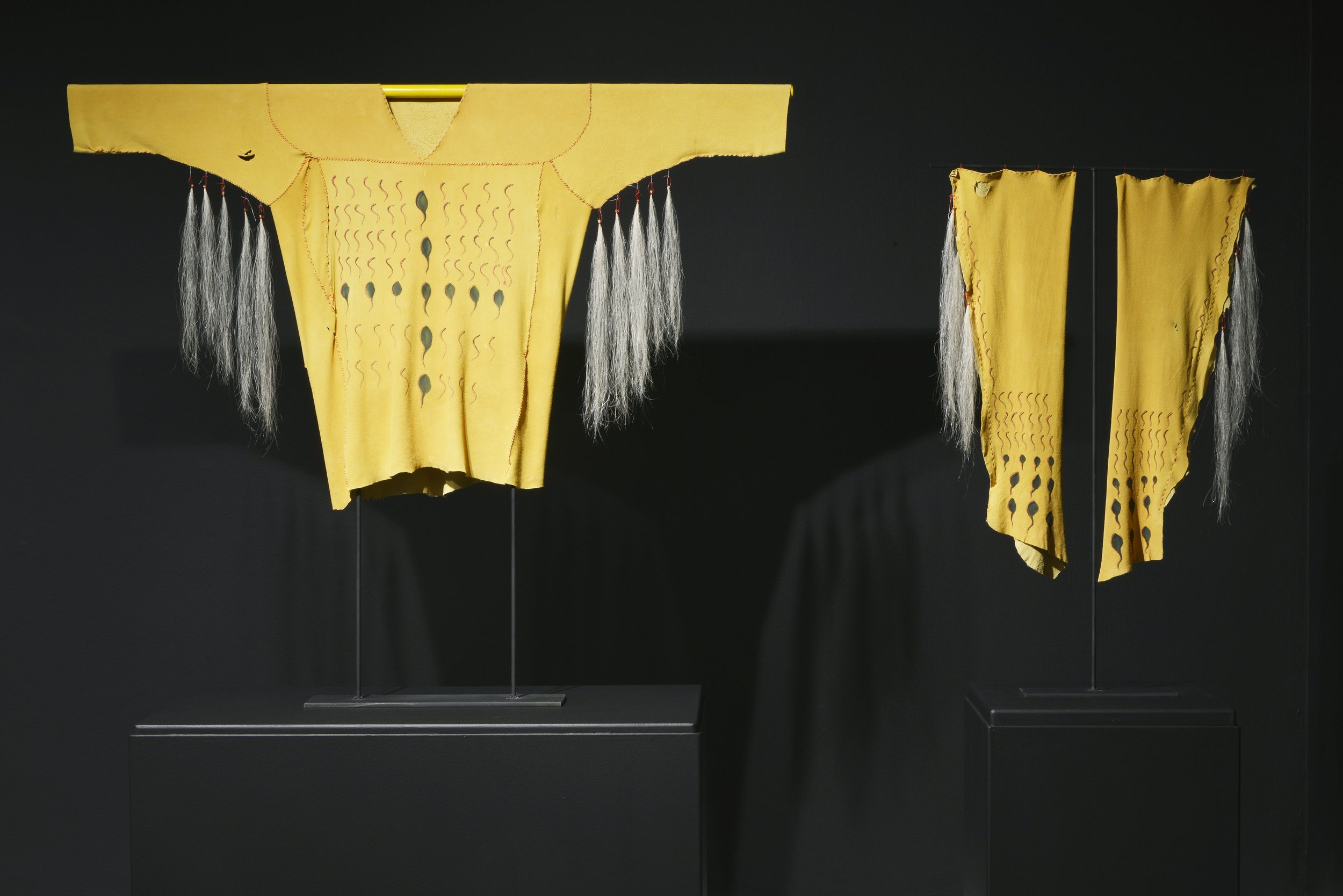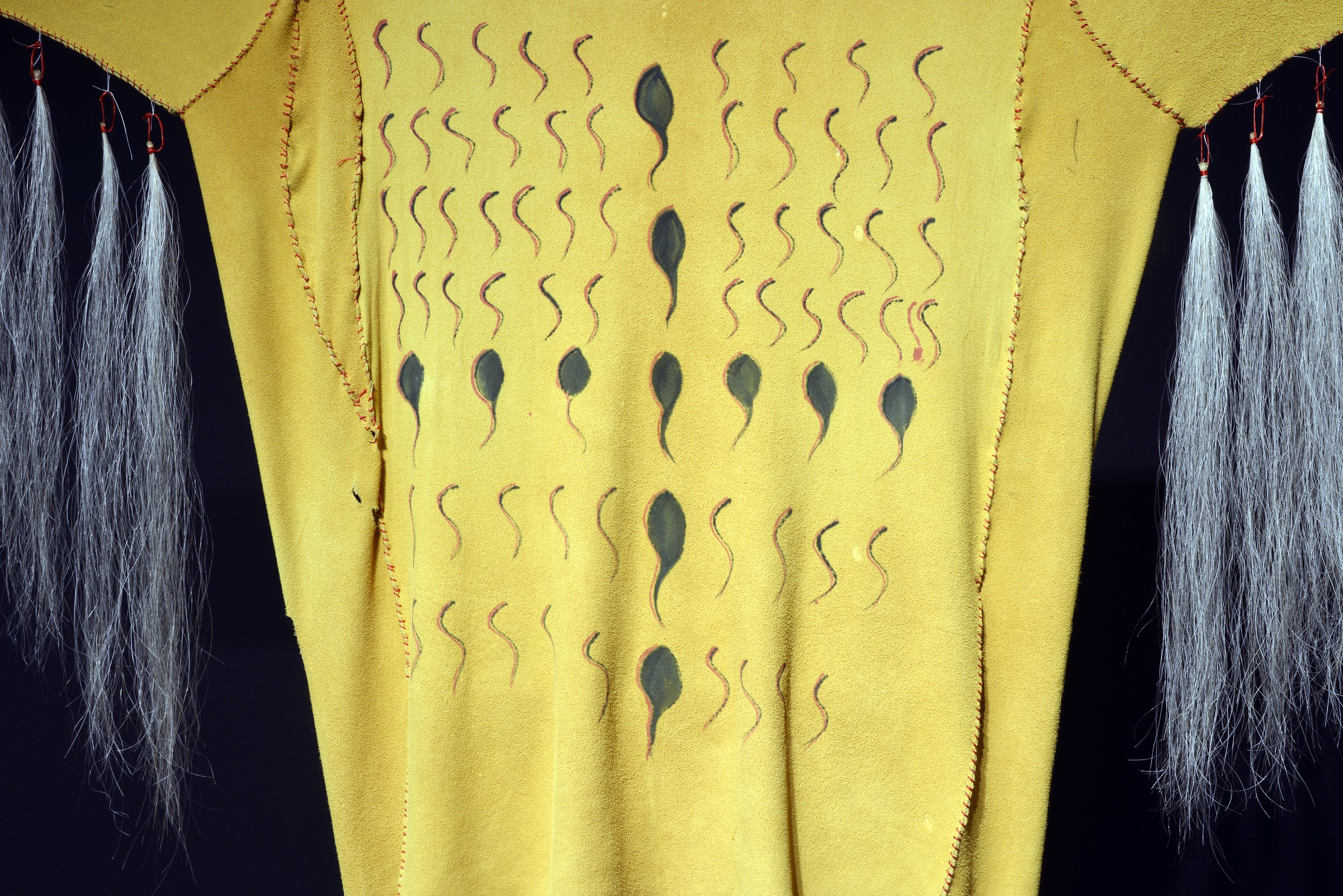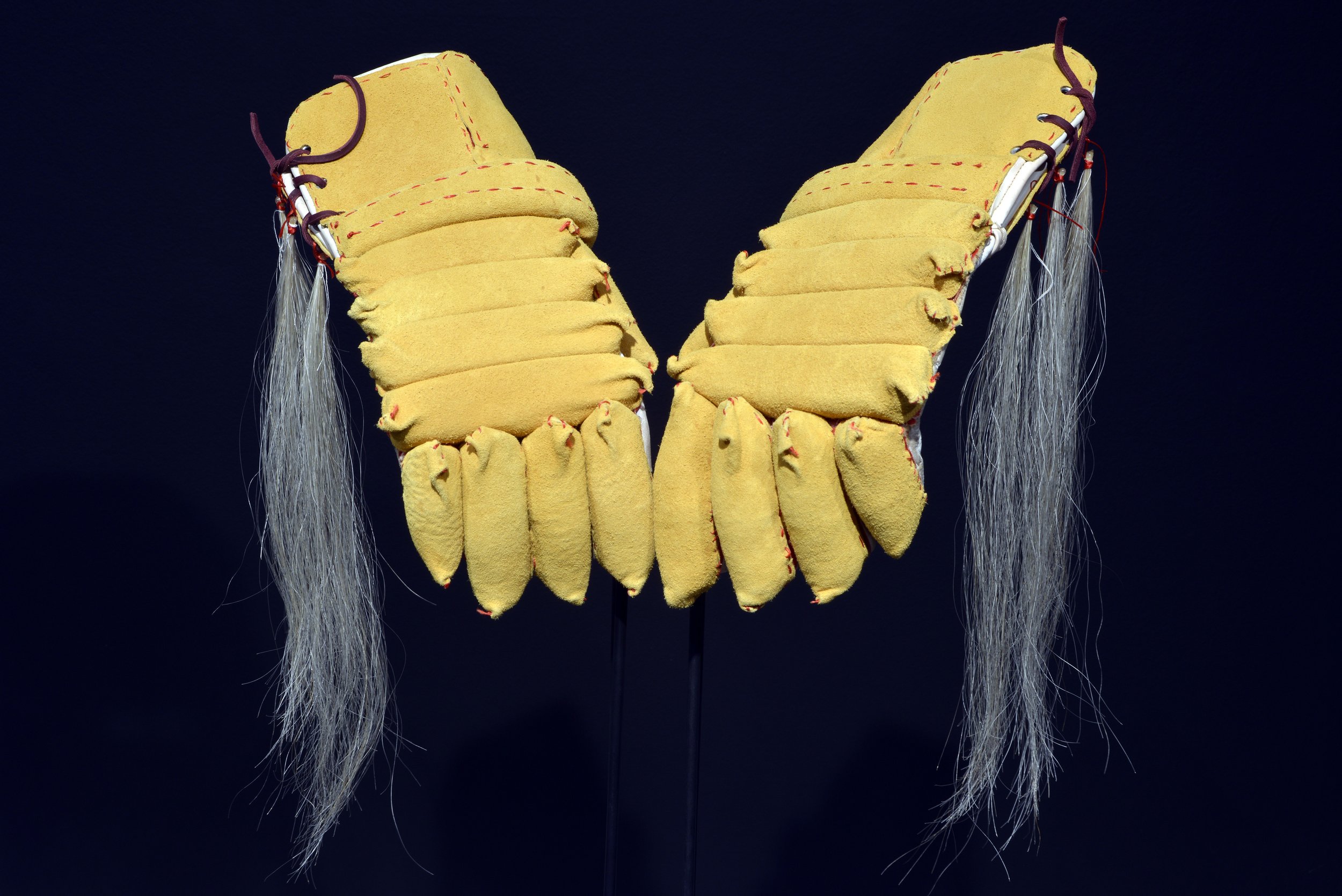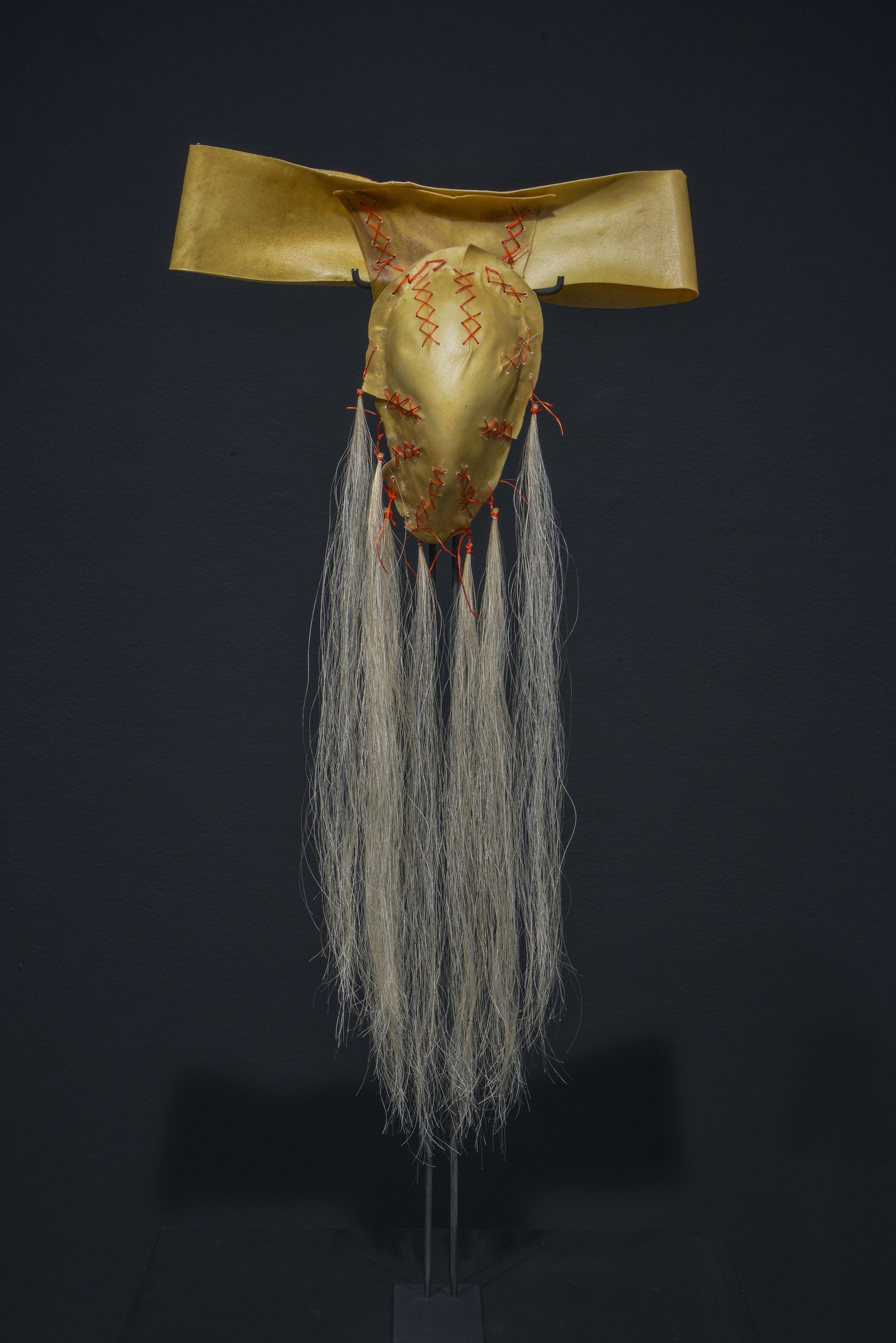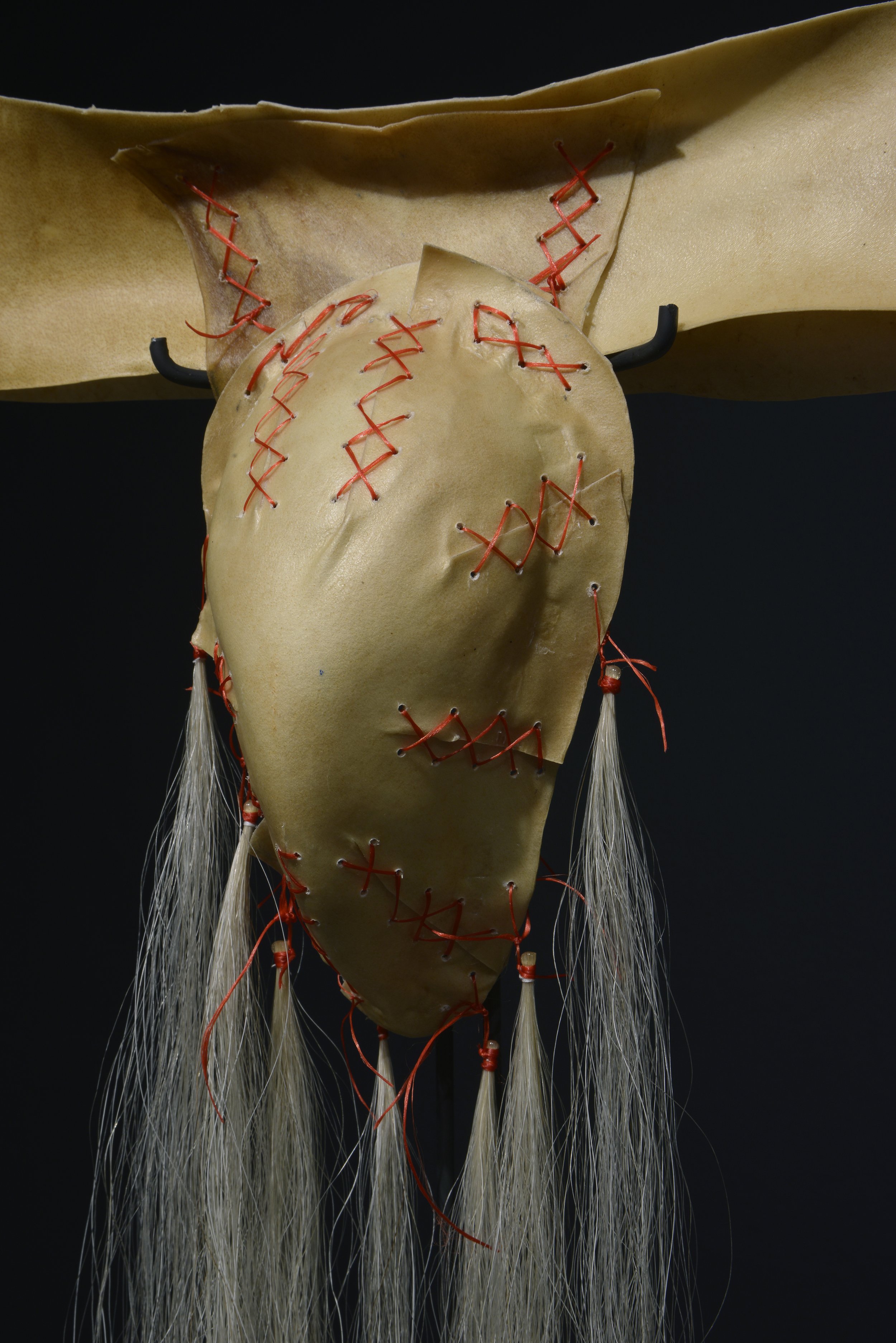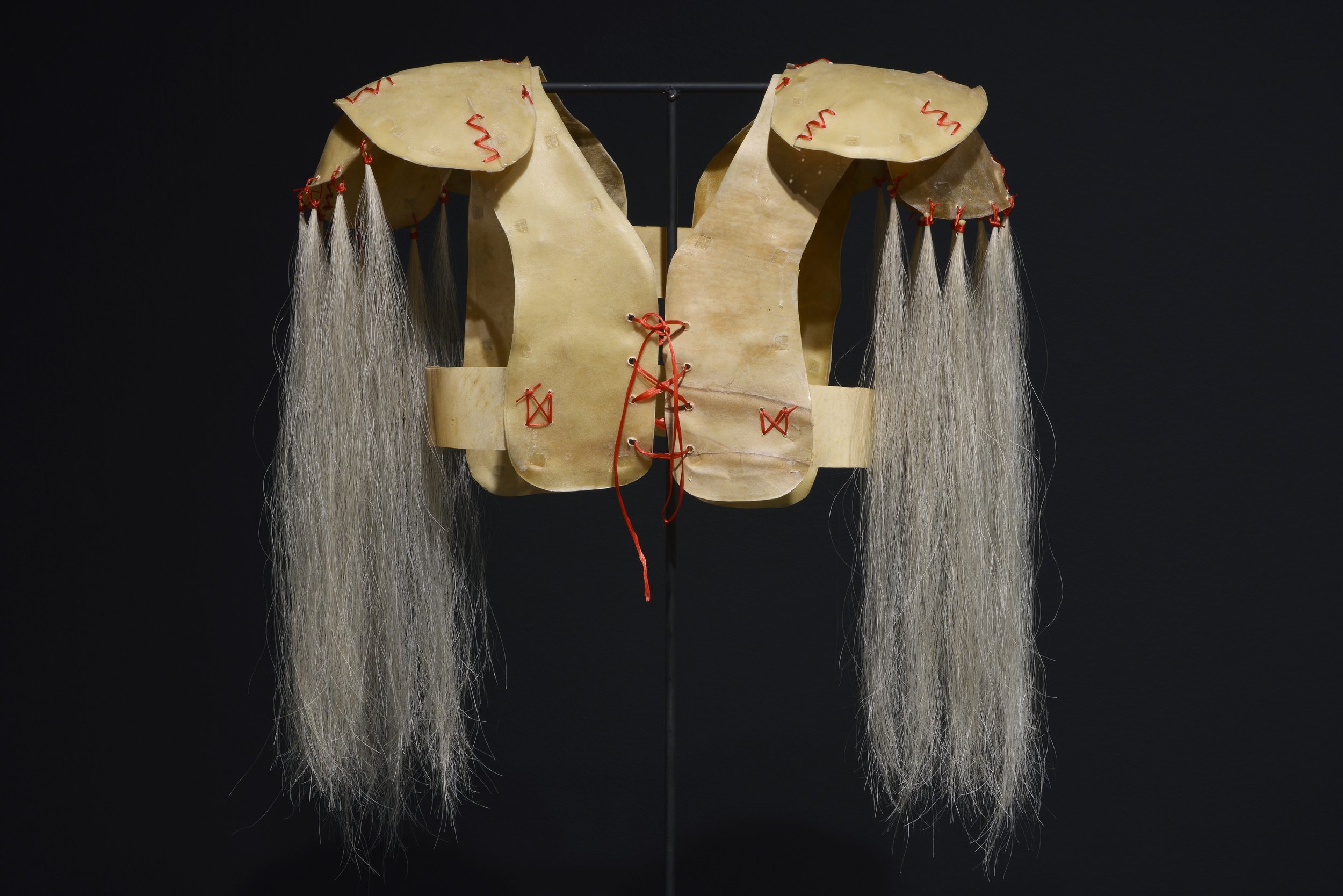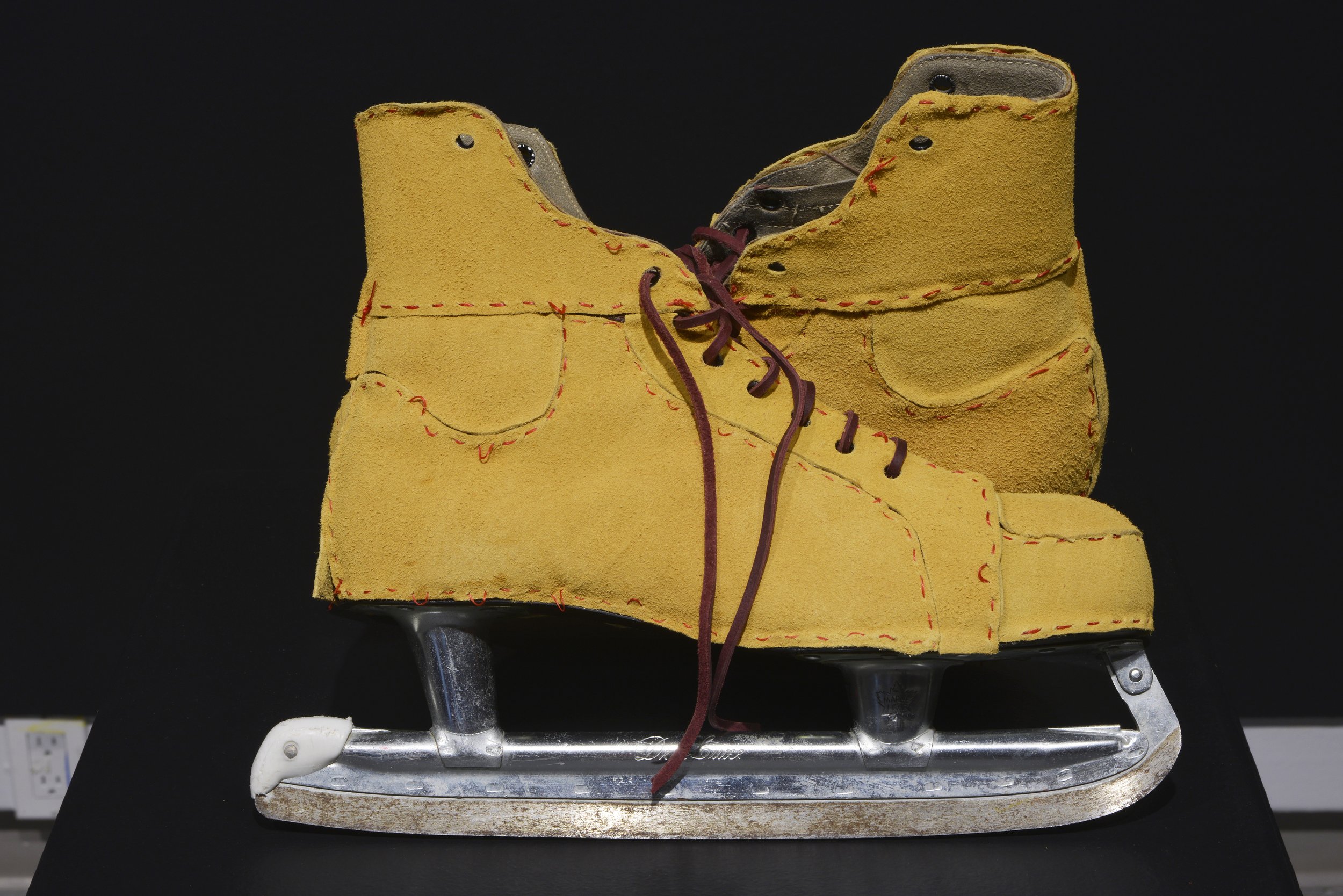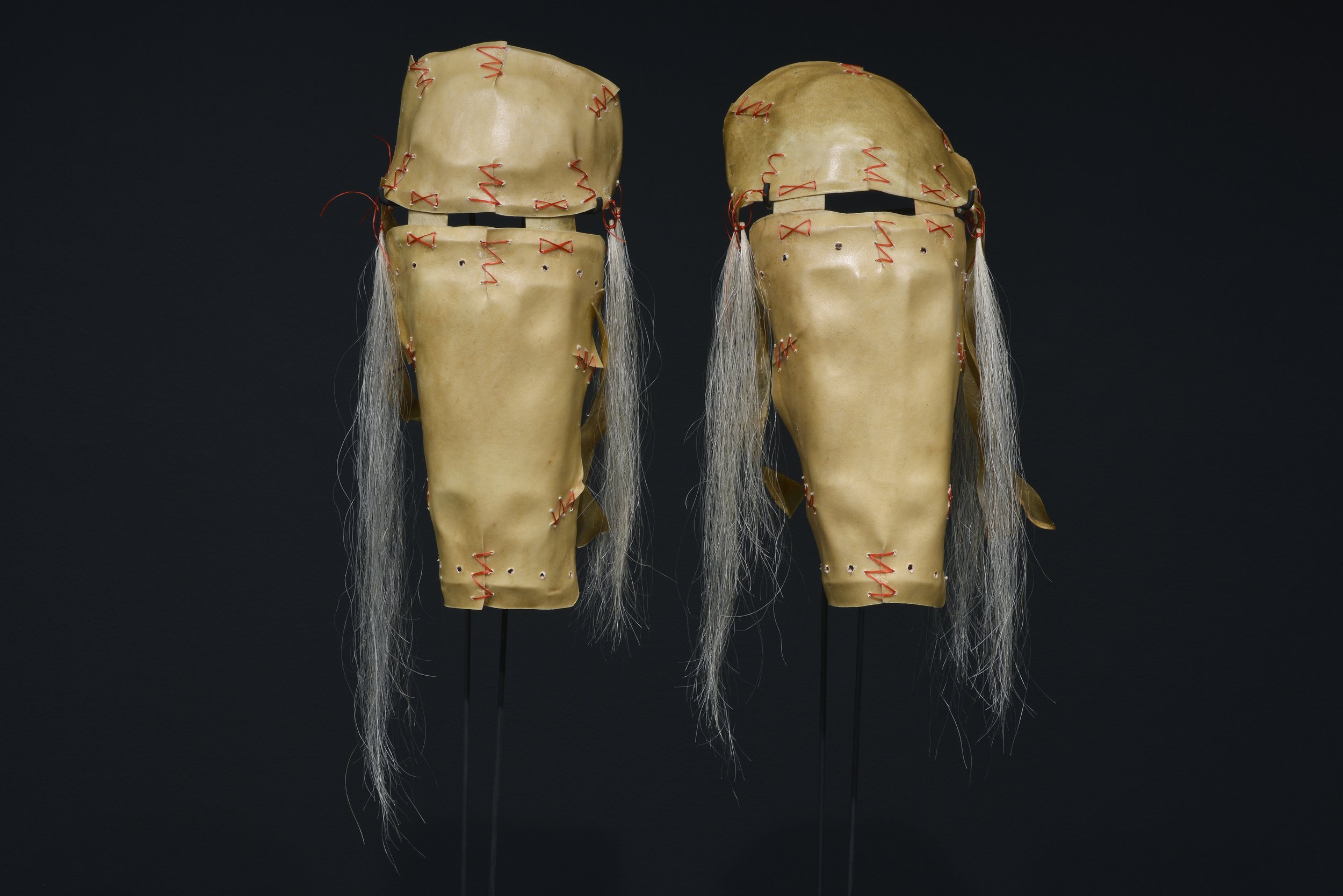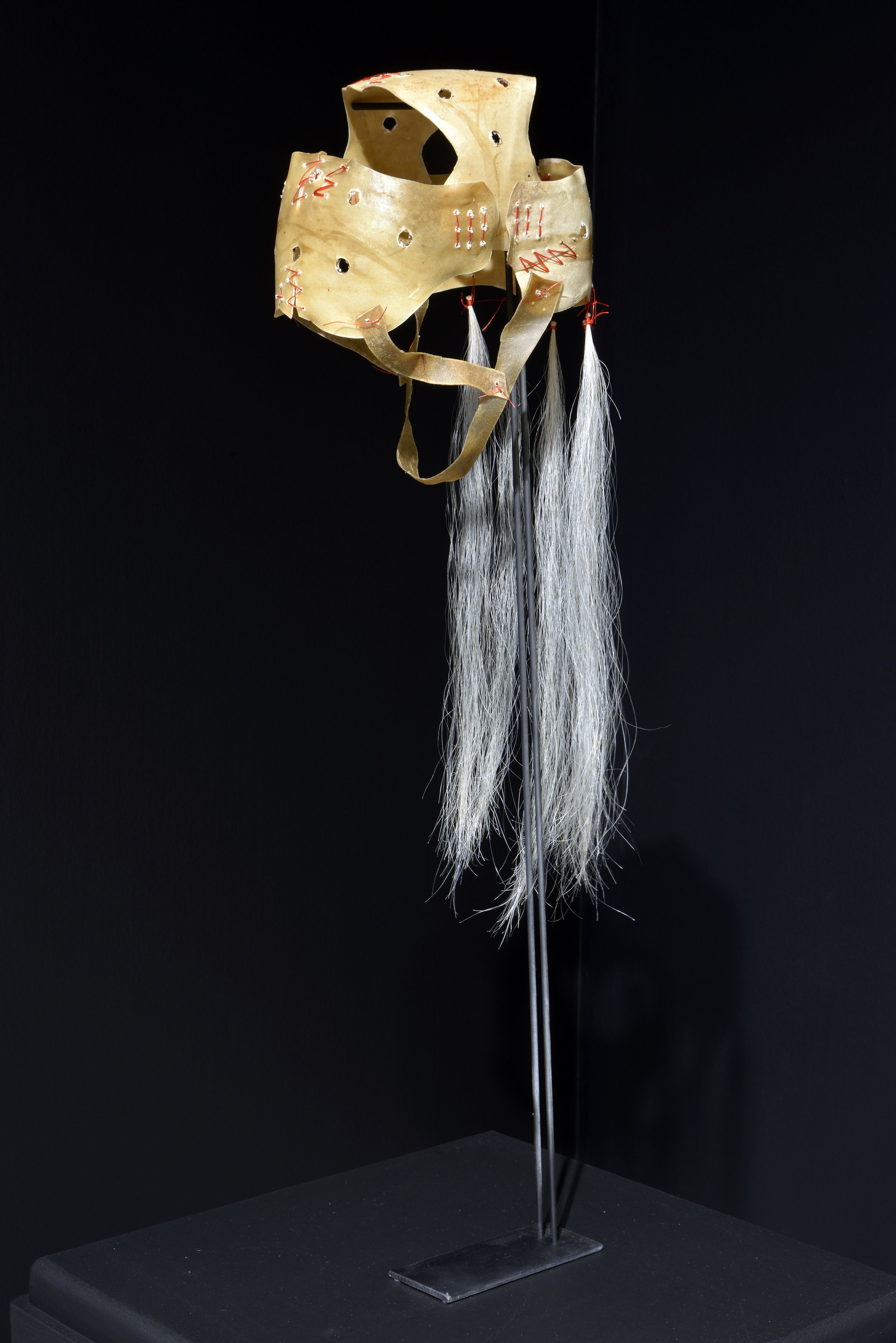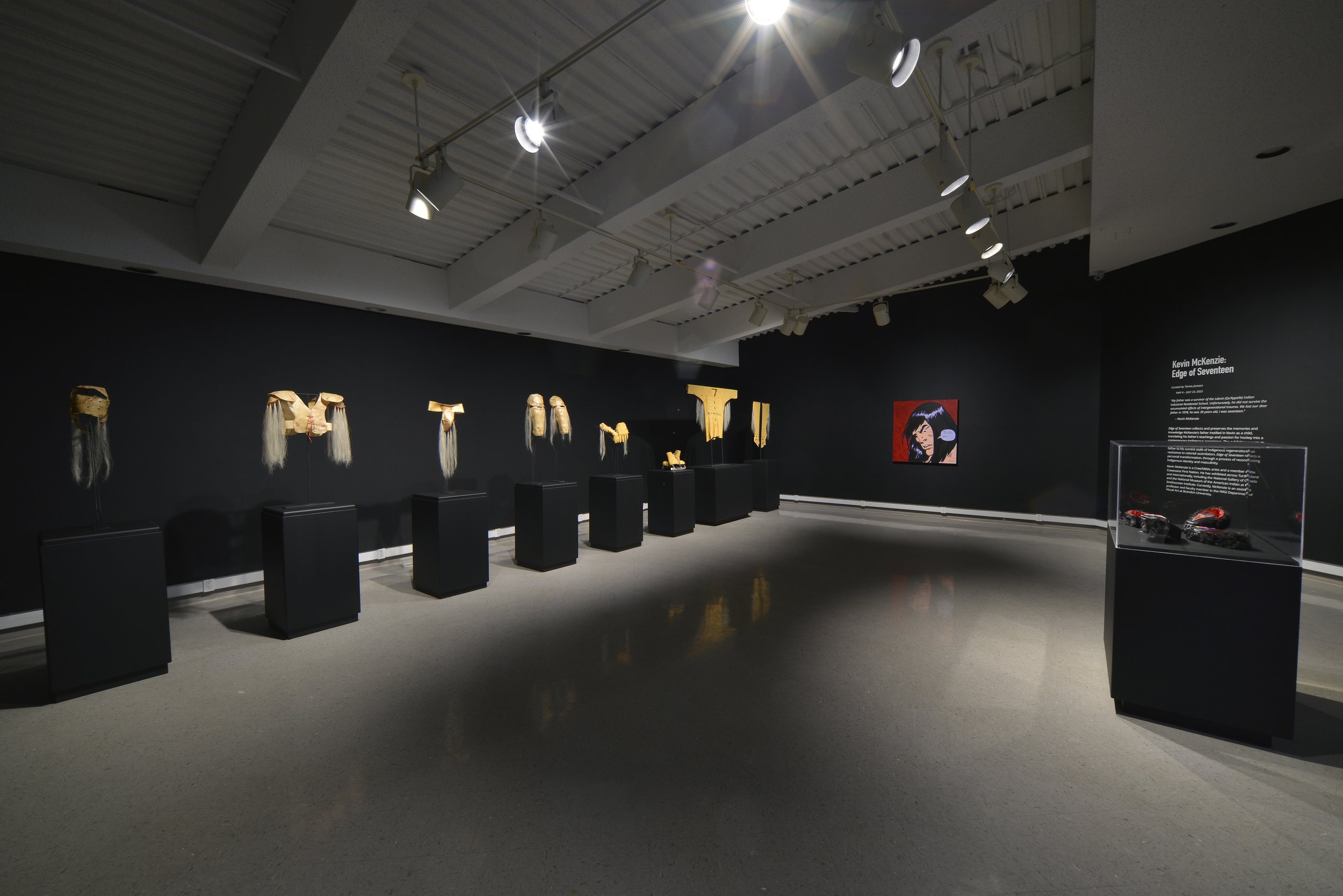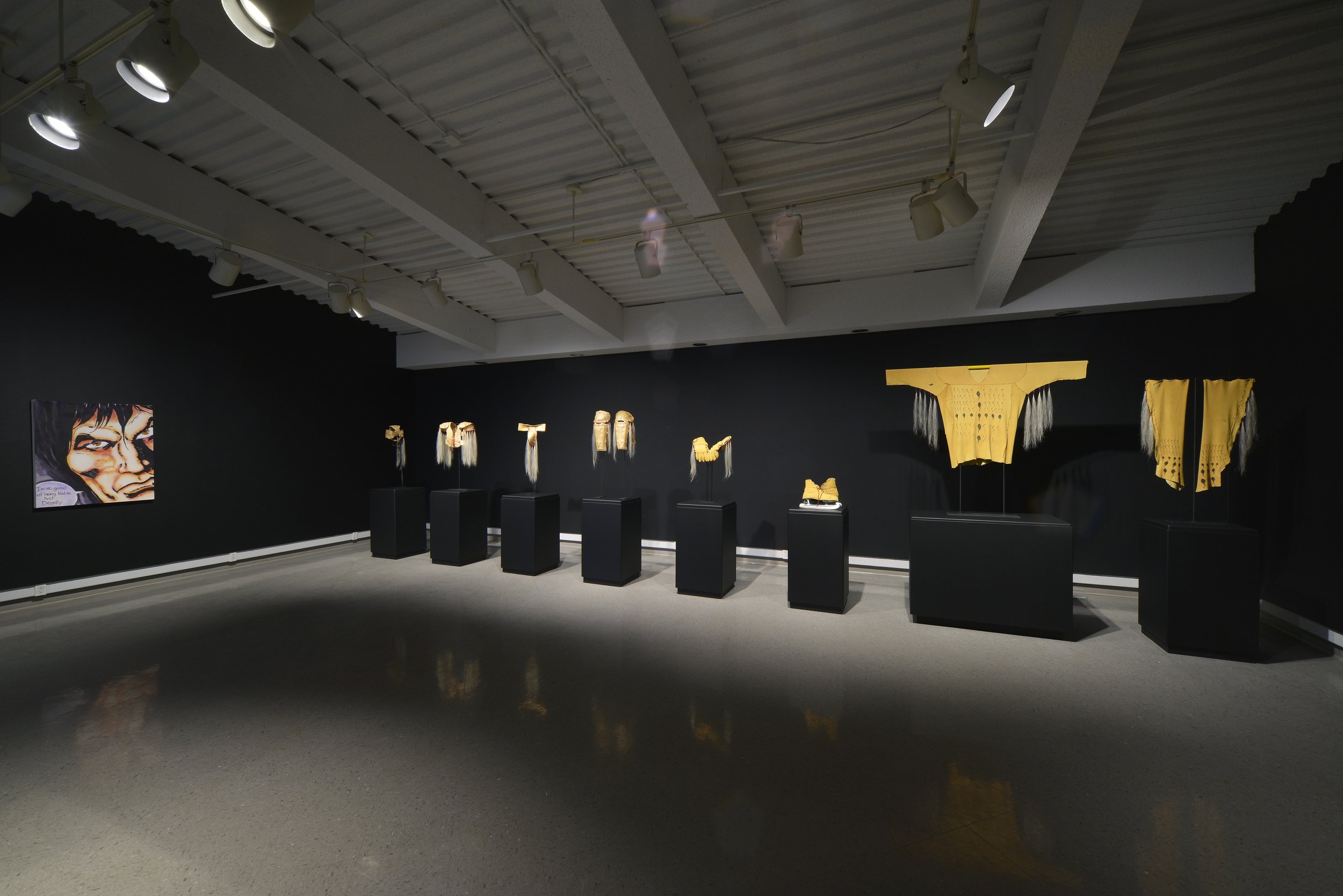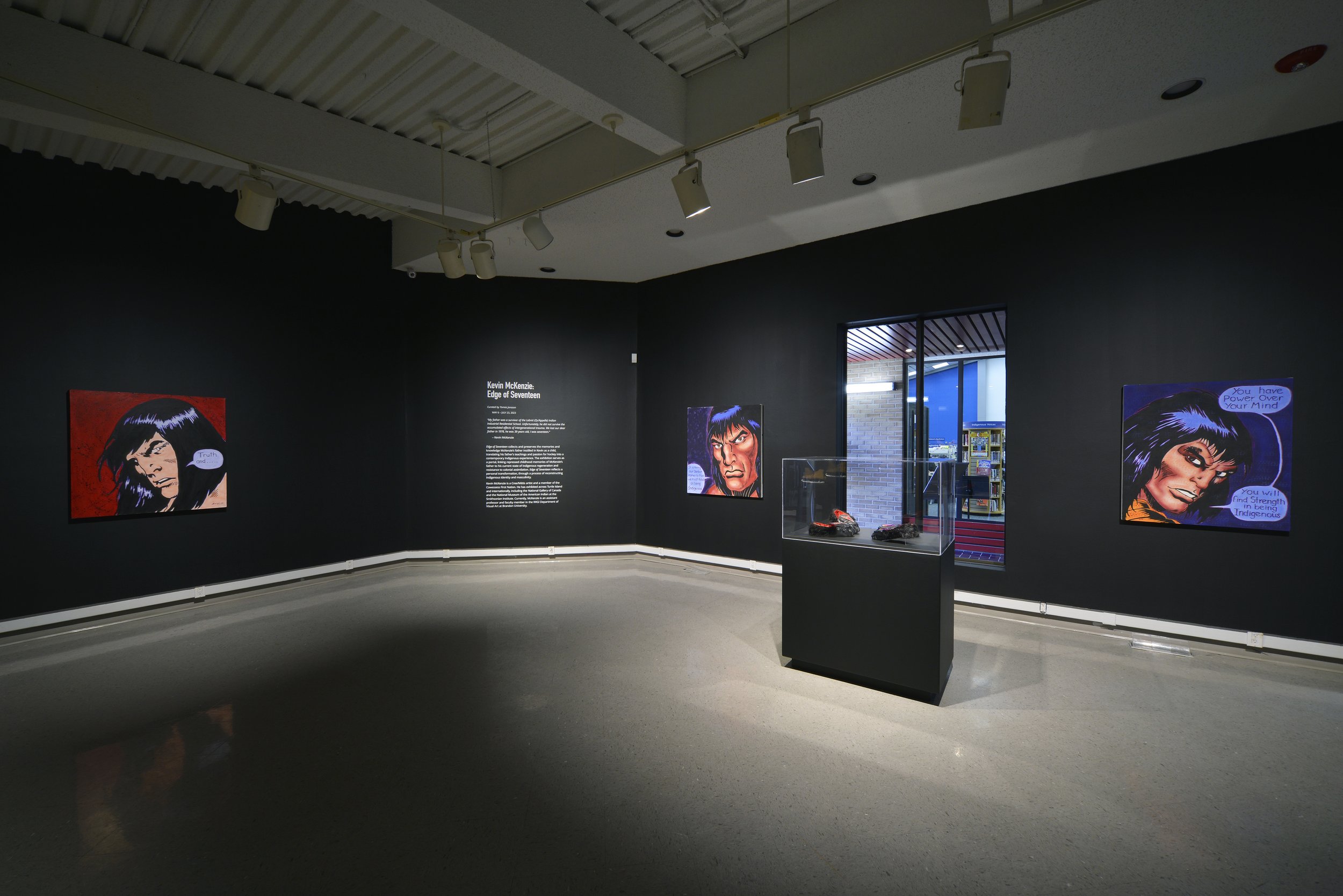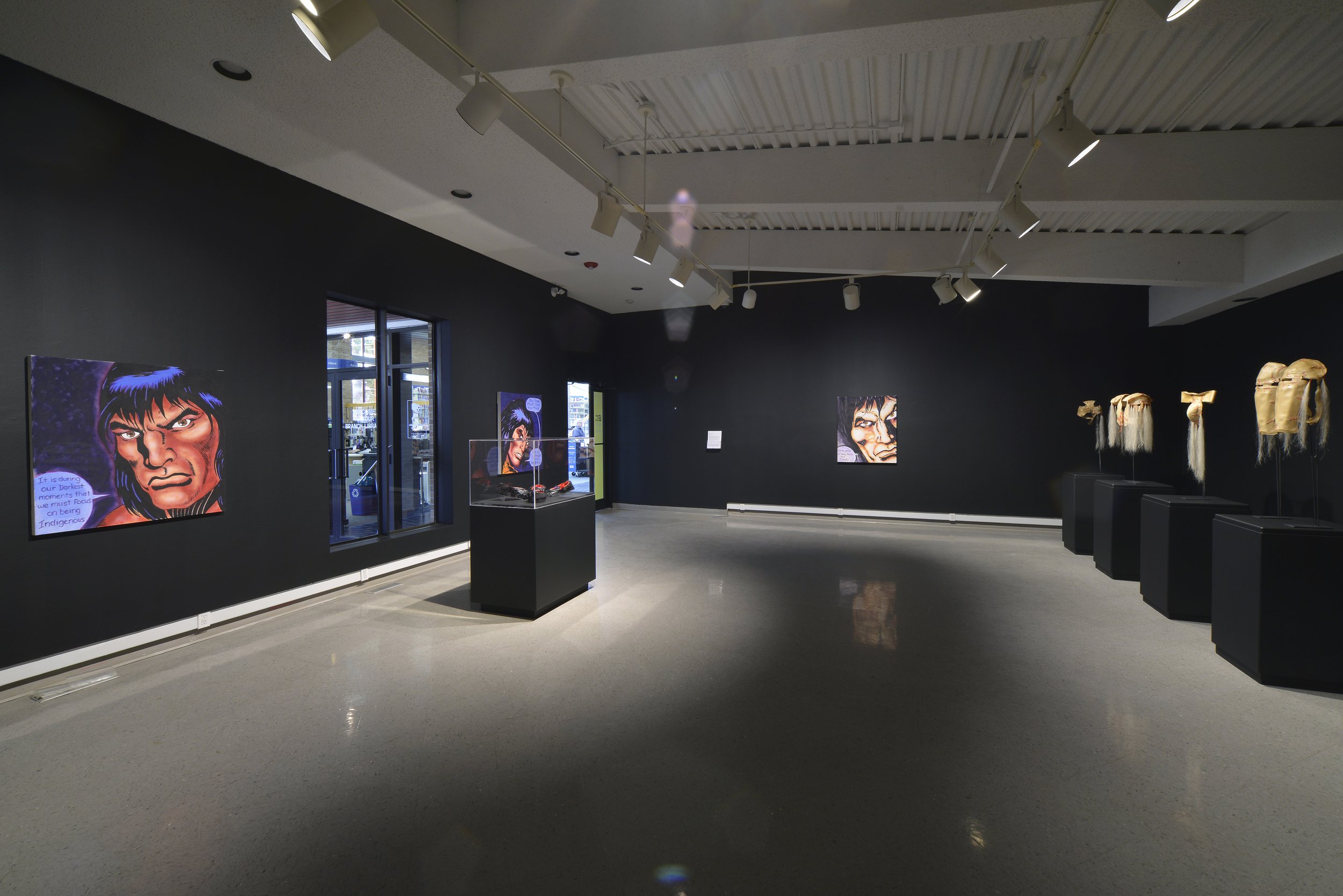Kevin McKenzie, Being Indigenous.
“My father was a survivor of the Lebret (Qu’Appelle) Indian Industrial Residential School. Unfortunately, he did not survive the accumulated effects of intergenerational trauma. We lost our dear father in 1978, he was 39 years old, I was seventeen.” - Kevin McKenzie
Edge of Seventeen collects and preserves the memories and knowledge McKenzie’s father instilled in Kevin as a child, translating his father’s teachings and passion for hockey into a contemporary Indigenous experience. The exhibition serves as a portal, linking repressed childhood memories of McKenzie’s father to his current state of Indigenous regeneration and resistance to colonial assimilation. Edge of Seventeen reflects a personal transformation, through a process of reconstructing Indigenous identity and masculinity.
Kevin McKenzie is Cree/Métis, Saskatchewan artist, based in Brandon, Manitoba. He is a member of the Cowessess First Nation of Saskatchewan, Treaty 4. He holds a BFA and an MFA from the University of Regina. McKenzie has exhibited nationally and internationally at notable galleries such as Museum of Arts and Design, New York, National Gallery of Canada, Ottawa, and Pataka Art Gallery Museum, New Zealand. McKenzie's artwork is represented in numerous public and corporate collections and has a permanent public sculpture in Whistler B.C. commissioned by VANOC Cultural Olympiad 2010. In 2022 he was commissioned by the President’s Office at Brandon University to produce a public sculpture dedicated to Truth and Reconciliation. Currently, McKenzie is an assistant professor and faculty member in the IWGI Department of Visual Art at Brandon University.
Artist ↑
Kevin McKenzie
Essay ↑
Kevin McKenzie: Edge of Seventeen
By Jenny Western
“Edge of Seventeen,” Stevie Nicks’ early 1980s anthem of grief and longing, begins with a chugging guitar riff and driving hi-hats. It gets the blood pumping just to hear it. The feeling of being young and sorrowful is somehow tangible and it is a song that so many people have connected with over the years. Artist Kevin McKenzie chose to title his solo exhibition “Edge of Seventeen,” not so much as an homage to Nicks’ rock goddess status but rather in reference to a turning point in his life as a young man. When McKenzie was seventeen, he lost his father. Only 39 at his death, McKenzie’s father was a survivor of the Lebret (Qu’Appelle) Indian Industrial Residential School. And yet as McKenzie explains, his father could not survive the accumulated effects of intergenerational trauma. When McKenzie lost his dad at such an influential age, he missed out on the rites of passage that a father would have walked through with his son. For McKenzie, who is Cree/Métis, these were not only coming of age teachings on manhood but also around teachings centred around Indigeneity, resulting in him being trapped in time for many years. “Edge of Seventeen” exhibits new artworks reflecting the healing and personal growth that has led McKenzie to enter a new stage in his life over recent years.
Although exhibiting sophisticated artistry, McKenzie’s artworks in “Edge of Seventeen” draw from the interests of an adolescent male circa the late 1970s and early 1980s; sports, leather jackets, hot rods, and comic books to name a few. McKenzie explains it as a certain kind of time travel. When he had the opportunity to inherit a collection of Conan the Barbarian comic books originally belonging to his deceased older brother, McKenzie found himself being transported back in time to when he had last seen these comics as a teen. The muscular, swarthy Conan with his long hair had always been considered Indigenous by McKenzie. This was a character in pop culture he felt he could relate to. With the Conan comics back in his hands McKenzie was inspired to revisit its imagery by isolating a panel and painting it on canvas, not unlike what Pop Art painter Roy Lichtenstein did with comics in the 1960s. But rather than offering parody, McKenzie is honouring and elevating Conan by adding thought bubbles and speech balloons to give his character a strong Indigenous voice. The words are quotations borrowed from notable historic characters such as Aristotle and Marcus Aurelius to pop culture references from Humphrey Bogart in “Casa Blanca” and poet Charles Bukowski. But McKenzie takes their lines and twists them ever so slightly in Conan’s mouth. Bogart’s line spoken originally by his character Rick as “I’m no good at being noble,” changes when Conan utters it as “I’m no good at being noble… just deadly.” In this way McKenzie sees Conan as not just a Barbarian but a cultured intellectual perhaps with a wry dose of Native humour too.
Despite the sense of loss that simmers just below the surface of “Edge of Seventeen,” McKenzie’s work remains playful. The elk rawhide and horsehair hockey gear that he completed during his MFA thesis turns the production of high-tech sporting equipment coyly on its head. After a conversation with Elder Barb Blind where Blind put forth that it is in actuality rawhide that is the high-tech material rather than Kevlar or any other synthetic materials used in sporting goods, McKenzie used red sinew to stitch rawhide into pieces resembling skates, helmets, and padding. For McKenzie the Frankensteinesque assemblage is his identity coming together, a return to knowledge and also another moment of traveling over time. His constructed hockey jersey is a tribute to a warrior shirt from the 1890s with its reminiscent cut and patterning. Similarly, for “Edge of Seventeen” McKenzie has created more soft sculpture apparel with his “Hot Rod Moccasins”. This time eschewing rawhide for leather from an old black leather jacket of his mom’s, McKenzie has constructed two moccasins lined with crushed red velvet on the inside and beading on the vamp. Moccasin making and beading are two fairly recent skills within McKenzie’s artistic arsenal, and he is embracing them wholeheartedly. On the first moccasins he has beaded hot rod flames and on the second he has beaded the iconic automotive emblem of the Pontiac arrowhead. This references not only the pop and lowbrow culture of hot rods but also a nod to the Odawa chief Pontiac. Pontiac (also known as Obwandiyag) led a historic uprising of several tribes in a resistance against British forces in the Great Lakes region. Despite occurring in the 1700s this organized opposition is pointed to as a forerunner for modern-day Indigenous rights movements and activism. Even with these seemingly small gestures - the warrior shirt, the beaded arrowhead, the comic books - McKenzie demonstrates how the influence of the past remains with us, shaping the present moment and urging us on in our growth and development as we enter the future.
And the days go by
Like a strand in the wind
In the web that is my own I begin again
Said to my friend baby (Everything stops)
Nothing else mattered
He was no more (he was no more)
Than a baby then
Well, he seemed brokenhearted
Something within him
But the moment
That I first laid eyes on him
All alone on the edge of seventeen
-Stevie Nicks “Edge of Seventeen”
Kevin McKenzie’s exhibition “Edge of Seventeen” is the culmination of one artist’s metamorphosis over the last few years, but it also spans several decades and a stretch of time that bridges several centuries. Its starting point is a boy who lost his father just as he was poised to become a man and its arrival is at a man who has finally come of age, who has come home to himself in so many ways. The artwork in this exhibition reflects and represents that. It is no longer the work of an artist perpetually frozen at the age of seventeen, he has reached its edge and he has eclipsed it, while taking the lessons learned along the way into the next era.
Jenny Western is an artist, writer, and curator based in Winnipeg, Manitoba. She holds an undergraduate degree in History from the University of Winnipeg and a Masters in Art History and Curatorial Practice from York University in Toronto. While completing her graduate studies, she accepted a position at the Art Gallery of Southwestern Manitoba in Brandon where she held the position of Curator and later became the AGSM’s Adjunct Curator. Western has curated exhibitions and programs across Canada and she makes up one-third of the Sobey Award nominated art collective The Ephemerals. Western is of European, Oneida, and Stockbridge-Musee descent and a member of the Brothertown Indian Nation of Wisconsin.
Installation Images ↑
Photos by Don Hall
